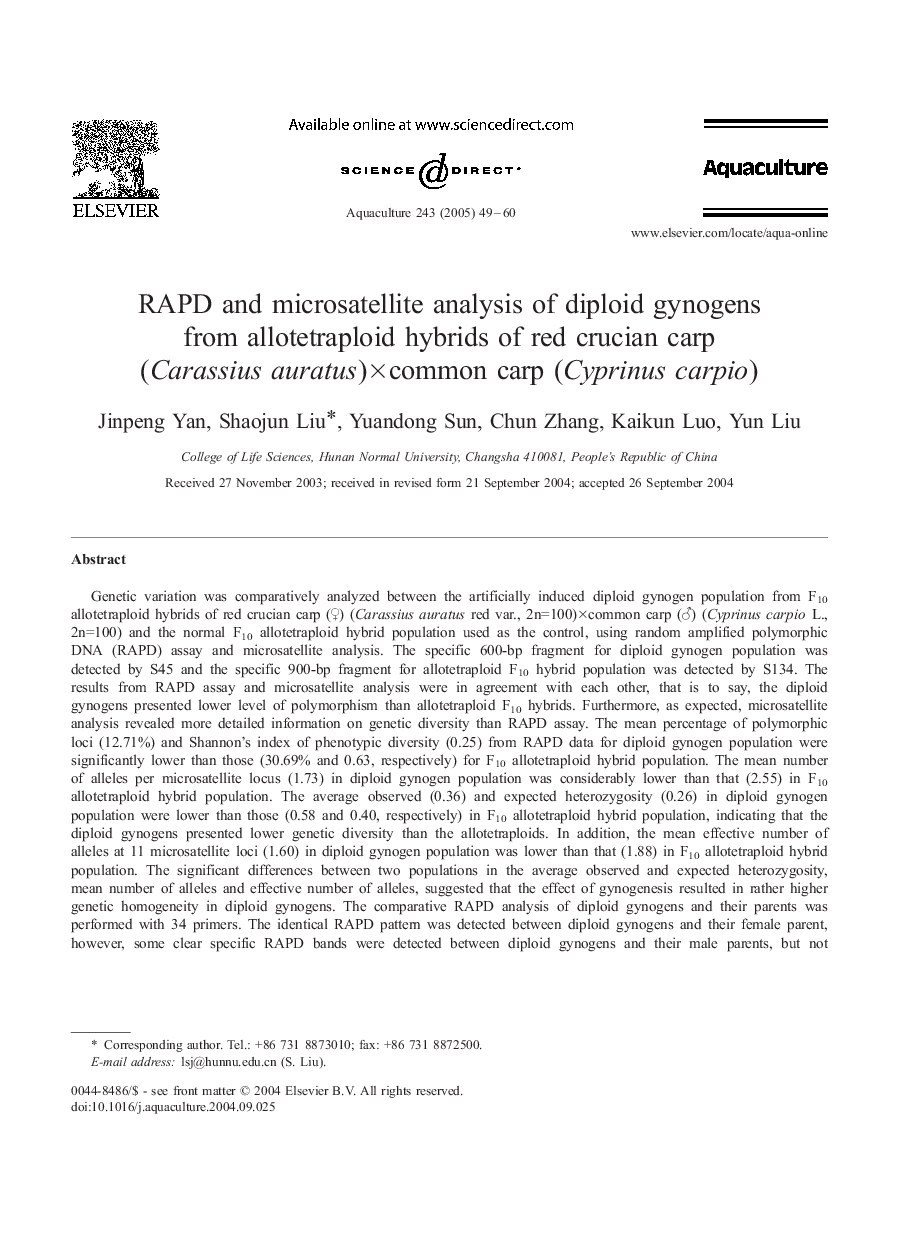| Article ID | Journal | Published Year | Pages | File Type |
|---|---|---|---|---|
| 8974988 | Aquaculture | 2005 | 12 Pages |
Abstract
Genetic variation was comparatively analyzed between the artificially induced diploid gynogen population from F10 allotetraploid hybrids of red crucian carp (â) (Carassius auratus red var., 2n=100)Ãcommon carp (â) (Cyprinus carpio L., 2n=100) and the normal F10 allotetraploid hybrid population used as the control, using random amplified polymorphic DNA (RAPD) assay and microsatellite analysis. The specific 600-bp fragment for diploid gynogen population was detected by S45 and the specific 900-bp fragment for allotetraploid F10 hybrid population was detected by S134. The results from RAPD assay and microsatellite analysis were in agreement with each other, that is to say, the diploid gynogens presented lower level of polymorphism than allotetraploid F10 hybrids. Furthermore, as expected, microsatellite analysis revealed more detailed information on genetic diversity than RAPD assay. The mean percentage of polymorphic loci (12.71%) and Shannon's index of phenotypic diversity (0.25) from RAPD data for diploid gynogen population were significantly lower than those (30.69% and 0.63, respectively) for F10 allotetraploid hybrid population. The mean number of alleles per microsatellite locus (1.73) in diploid gynogen population was considerably lower than that (2.55) in F10 allotetraploid hybrid population. The average observed (0.36) and expected heterozygosity (0.26) in diploid gynogen population were lower than those (0.58 and 0.40, respectively) in F10 allotetraploid hybrid population, indicating that the diploid gynogens presented lower genetic diversity than the allotetraploids. In addition, the mean effective number of alleles at 11 microsatellite loci (1.60) in diploid gynogen population was lower than that (1.88) in F10 allotetraploid hybrid population. The significant differences between two populations in the average observed and expected heterozygosity, mean number of alleles and effective number of alleles, suggested that the effect of gynogenesis resulted in rather higher genetic homogeneity in diploid gynogens. The comparative RAPD analysis of diploid gynogens and their parents was performed with 34 primers. The identical RAPD pattern was detected between diploid gynogens and their female parent, however, some clear specific RAPD bands were detected between diploid gynogens and their male parents, but not detected in their female parent. The result indicated that heterologous genetic material had incorporated into diploid gynogenetic fish (G1).
Keywords
Related Topics
Life Sciences
Agricultural and Biological Sciences
Aquatic Science
Authors
Jinpeng Yan, Shaojun Liu, Yuandong Sun, Chun Zhang, Kaikun Luo, Yun Liu,
